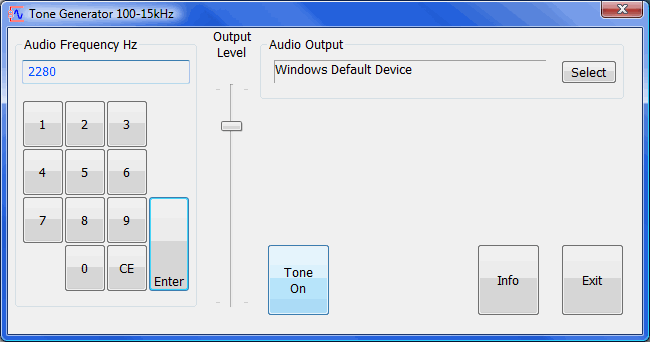Programma Generator Sinusa
Free Use of This Barcode Generator You may use this barcode generator as part of your non-commercial web-application or web-site to create dynamic barcodes with your own data. The only condition is, that you include the text ' generated with TEC-IT '.
Back-linking to is required, are optional. Please for commercial use. Here is the finished HTML-code, set your data in the GET parameter 'data': Barcode Software.
Amplitude sinusa i vrsta modulacije, preko specifiˇcnosti razvojnog okruženja i sklo-povlja na kojem je razvijen generator signala, pa sve do konacno postignutih rezultata.ˇ 1Reduced Instruction Set Computer 2Very Long Instruction Word 1.
Hey, This depends on how pure you need teh waves. You could make a DAC by using 8 resistor's per port pin on an AVR. Setup a lookup table for the sine waves, and a interrupt that occurs T/256 times per section, where T is the period of your wave (T = 1/50). Or interrupt every 7.8uS roughly. If a processor was running at 4 MHz, that's an interrupt every 313 instructions.
Plenty of time to do the lookup in an interrupt routine. Use three ports, and have each port's output based on a different offset in the lookup table index. This should give you the phase shift needed. This assumes a stepped sine-wave with 256 steps is OK, and you wanted to do it in an AVR. If you can get away with less steps (16 for example) you could fit this on 1.5 ports, and some of the smaller AVRs would work.
Regards, -Colin. I guess when I mentioned the LUT I was referring to using a strategy similar to what Colin mentioned, but instead of using three 8-bit ports with resistor-emulated DAC's, I was thinking of three PWM outputs that feed into a low-pass RC filter. Of course there's a thousand diferent ways to do the same thing, but three Sine LUT's with the first elements in each being offset by 120 degrees, and indexed based off a timed interrupt to feed into each output compare would do the trick. Or one Sine LUT with three indexes, each index offset so that it points to a portion of the sine value that is 120 degrees apart. Similar to what Colin mentioned anyway, but only using 3 IO pins.
Hello, I recommend using a table in Flash and also three Maxim MAX517 DAC ICs to create the sine waves that you need. The MAX517 is a serial input 2-wire 8-bit DAC that runs on +5V. It's about $3 to $5 each. If you have the space on the PCB or the patience to do a lot of soldering, a R/2R latter of resistors can be built to simulate a DAC. Check the Maxim-IC.com website for other DACs that might be easier to use, abet at a greater cost. The post above by c_oflynn is good advice on setting up the AVR code for this application.
Quote: Just i was thinking also for producing three square pulses and use low-pass filters. Can this give me fairly good results with 1 or second order filters? What's fairly good?;-) It all depends on your requirements. Think about how a capacitor charges and discharges: So your square-wave idea is effectively charging and then discharging the capacitor in the filter. You won't get a sine wave, you'll get a wave that looks like the left half + the right half repeated.
If that's good enough then you're fine! Quote: Can this give me fairly good results with 1 or second order filters? A square wave has (theoretically) no energy at any even harmonic, quite a bit at the third harmonic, and rapidly diminishing beyond that. You can get excellent results with a simple 150 Hz 'twin-T' notch filter on a squarewave. If you want to add a first-order filter after that, you'll have even lower distortion.:?: You haven't mentioned what your distortion requirements are.:?: Does it need to be: 1) Below some% value. 2) Monotonic (exactly two zero crosses per cycle) 3) Accurate frequency?%, or ppm? 4) Adjustable frequency?
Popytka _Ex: to make a stab at conversation pytat'sya zavyazat' besedu 7> nanosit' udar (nozhom, kinzhalom) 8> vonzat' (nozh i t. Programma dlya bistrogo vzyatiya zakazov v taksi 1. P.); kolot' (shtykom) _Ex: to stab a knife into smb.'
